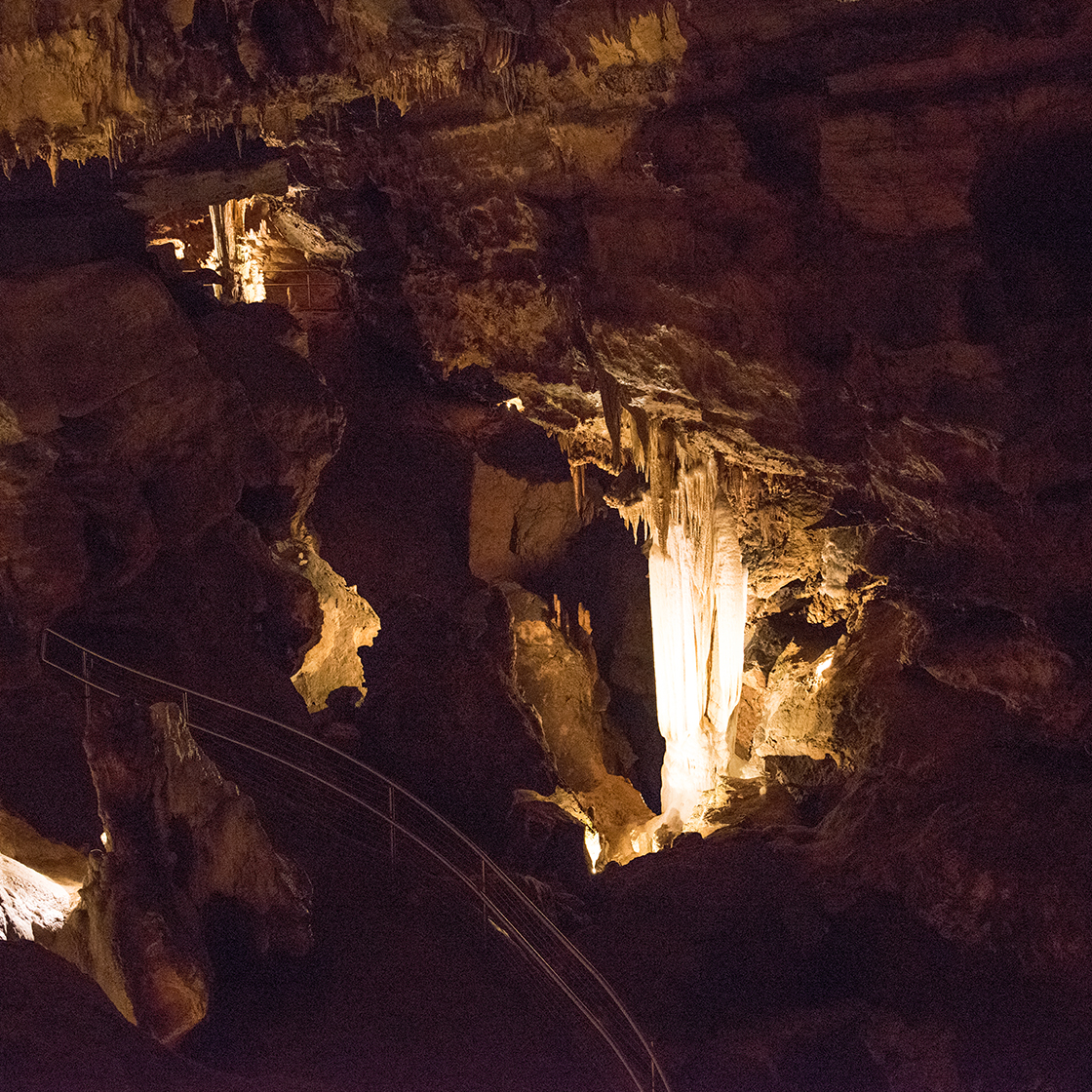
Cave Expectations
On a balmy August day in 1878, some local men were prospecting for caverns in the Shenandoah Valley in northern Virginia. Andrew Campbell, his thirteen-year-old nephew Quint, William Campbell, and Benton Stebbins were tipped off to the presence of caverns nearby because of the karst topography (limestone and dolomite sedimentary rock deposits). Feeling an odd, cool breeze originating from a depression on the hillside, they began digging at it. Five hours later, Andrew Campbell and Quint entered the caverns by sliding down into it. Their first sight was what would be dubbed the Washington Column, named after the first president of the United States.
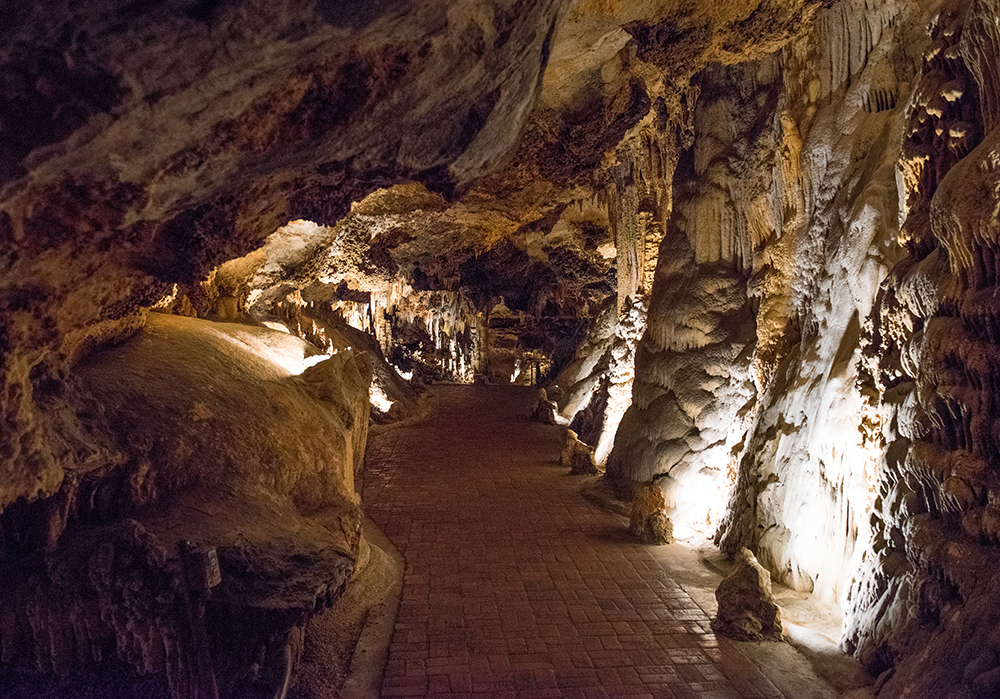
The first Grand Illumination of Luray Caverns occurred on November 9, 1878, and the attraction has been open every day since. These days, this popular Virginia attraction, declared a National Natural Landmark in 1973, welcomes 500,000 visitors each year. It’s the fourth-largest caverns in the United States that is open to the public and covers sixty-four acres. Interested guests can visit the caverns every day of the year through a guided tour, which loops a mile and a quarter through the one-third of the caverns open to visitors.
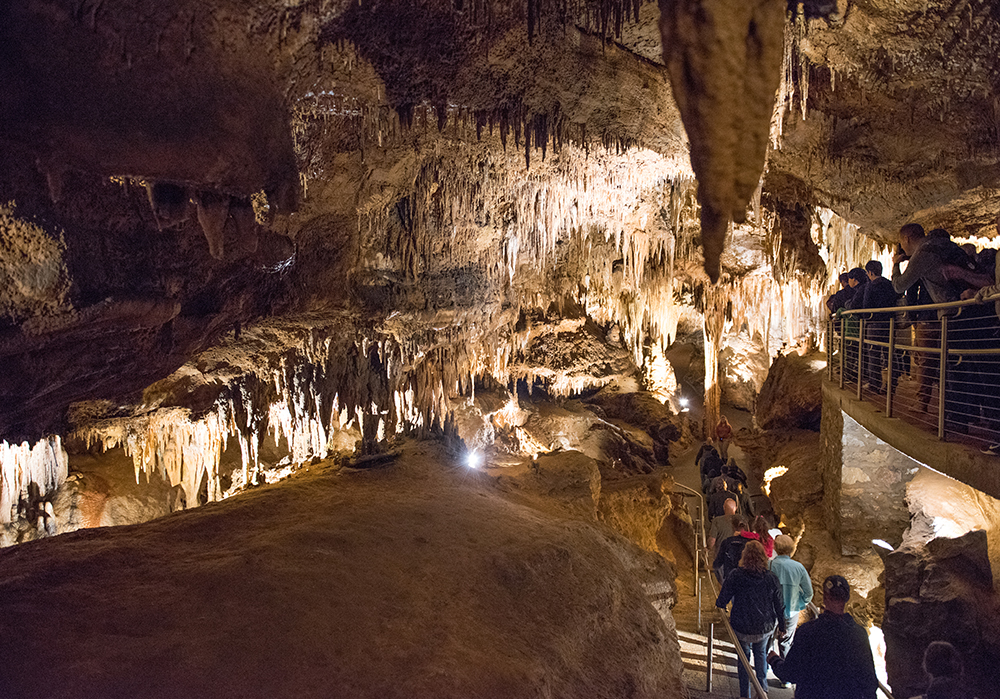
The tour begins with a set of stairs leading guests down into the caverns, where the temperature is a constant 54 degrees—a welcome respite in both the dead of winter and the heat of summer. Being inside the caverns feels like discovering a secret underground world of magic and minerals, enhanced further by strategic uplighting on timers. Luray Caverns came to be through a long process that began when water mixed with carbon dioxide to form carbonic acid. This acid ate away at the softer bedrock, forming the large, hollowed-out spaces. Inside the caverns, water and minerals mixed together and dripped down to create dripstone such as stalactites, which grow from the ceiling down. When a stalactite collects too much water, the water drips to the floor and creates stalagmites, which grow from the floor up. The two can even join together, forming a column. It takes 120 years to form a cubic inch of dripstone. Another type of formation, flowstone, is created in caverns when the mineral water flows and builds up over time, giving the appearance of drapery over rocks. Flowstone takes a whopping 300 years per cubic inch.
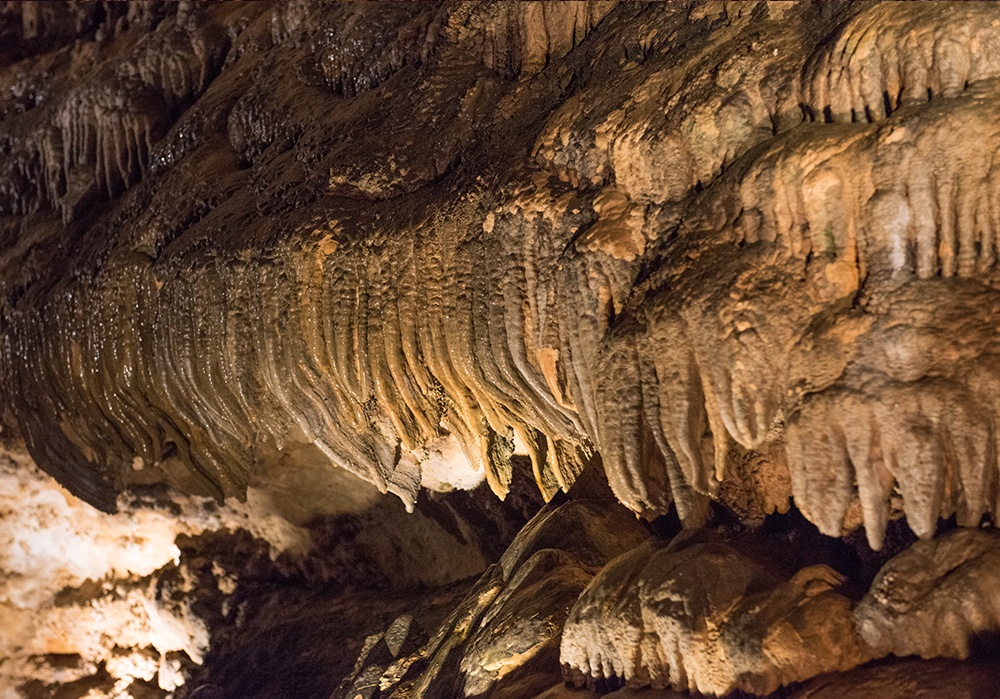
In addition to two different formation textures, there are four variations in color that can be found in the caverns: calcite in its pure form without other impurities (or minerals) is white; gray or black indicates manganese; and rustic orange indicates iron oxide. The fourth color, green, is simply the result of algae and moss.
With that vital information in tow, visitors are introduced to Dream Lake, an optical illusion of epic proportions. What appears to be a bottomless expanse is, in reality, only one or two inches deep in places, with a max depth of eighteen to twenty inches. The stalactites on the ceiling are mirrored perfectly onto the flat surface below, creating the illusion of thousands of stalagmites emerging from the depths of the lake.
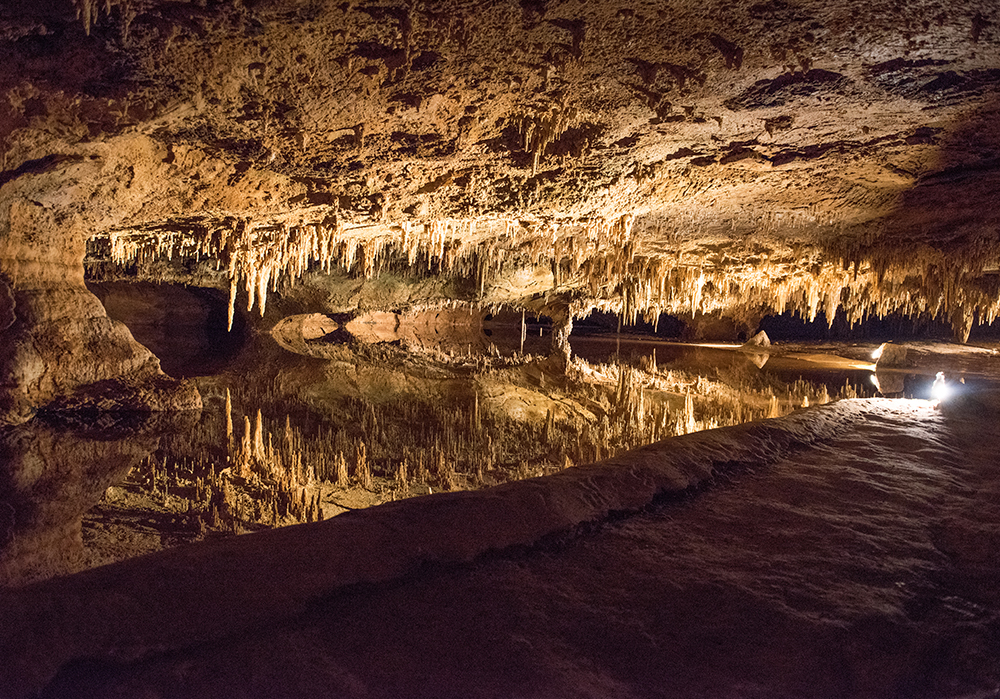
Next up in this underground geological maze is Pluto’s Chasm, once a horizontal waterway, measuring 500 feet in length and 70 to 90 feet in depth. A calcite formation dubbed Pluto’s Ghost (named after the Roman god of the underworld and the ghost that Andrew Campbell thought was following him) is visible from three different spots in the caverns, hence the reason Campbell thought he was being stalked.
Past Pluto’s Chasm is a bridge that overlooks Skeleton Gorge. Several bone fragments were found in Skeleton Gorge, believed to have been transported by huge rains or flooding hundreds of years ago. The bones were covered in calcite.
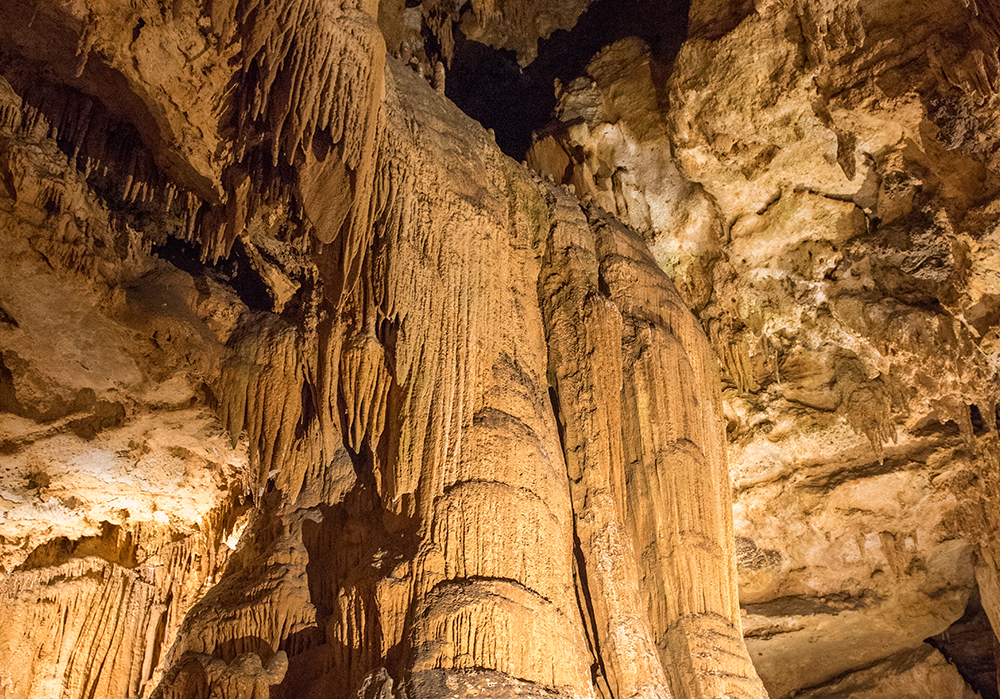
Descending deeper into the caverns, tourgoers enter the Main Body, one of the largest and driest spaces in the caverns. It owes its lack of water to its placement beneath Cave Hill, which
is shaped like an umbrella, preventing water from seeping inside. In fact, no water has touched the Main Body for thousands of years.
Though the name Main Body sounds like it would be the deepest point inside the caverns, that honor is reserved for Giant’s Hall, which boasts ceilings that are ten stories tall. On the way
there, visitors go through the Overlook Chamber, where they are treated to a look at the Giant Redwood Tree, the oldest formation inside Luray Caverns. This hulking piece of flowstone is 40 feet in height and 120 feet around. Because each cubic inch takes 300 years to form, experts estimate the Giant Redwood Tree must be well over seven million years old.
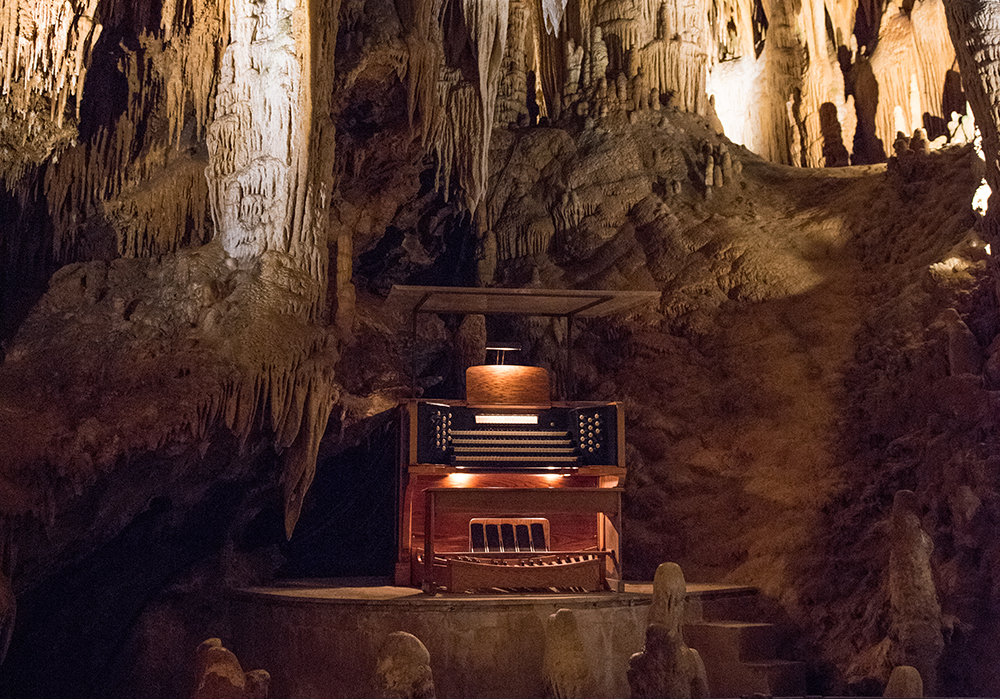
Now into Giant’s Hall, attention goes to Saracen’s Tent, another example of flowstone. It is, in fact, the world’s best representation of flowstone as ranked by National Geographic. And it sits next to a great example of dripstone, making it easy to visually understand the difference between them. The Great Fallen Stalactite is the largest and most recent formation to fall inside the caverns. (“Recent” is used loosely in this case, as the formation fell over 7,000 years ago.) Also inside Giant’s Hall is the tallest formation, named the Double Column or the Bride and Groom Column, referring to its popularity as a wedding site.
One of the most anticipated parts of the tour is the Great Stalacpipe Organ, which is located in the Cathedral. This organ was created by a Springfield, Virginia, man named Leland Sprinkle, who spent three years on his project, completing it in 1957. This organ has appeared in the Guinness Book of World Records as the largest musical instrument in the world. Unlike a normal organ, Sprinkle’s instrument produces sound using solenoids, electromagnets that generate controlled magnetic fields. These solenoids are positioned beside stalactites throughout three-and-a-half acres of Luray Caverns. When a key is pressed on the organ, electricity is sent to a corresponding solenoid, producing a melodic vibration. It is the magnet attracting the vibration from metal that transports the sound of the note back to the Cathedral. The Stalacpipe Organ can be set to play on its own, and guests are serenaded by Sprinkle’s favorite hymn, “A Mighty Fortress Is Our God.”
The tour concludes with a lovely tribute to the veterans of Page County. The Veterans Memorial Plaque was once inside the courthouse in Luray but was relocated inside the caverns to give more people the chance to pay their respects. Visitors also pass by the Wishing Well. Unlike Dream Lake, which looks deep but is actually shallow, the Wishing Well is an unassuming six feet deep and has collected over one million dollars since its origination in the 1950s. It’s pretty incredible to think of the generations of people who have traipsed through these caverns, from the nineteenth century to present day. Luckily, some detrimental practices have been stopped, like permitting visitors to take home a piece of stalactite—seems like a perfect souvenir, but it is actually quite destructive to the caverns. Well-lit pathways make touring the caverns an approachable activity for all ages, but take the stairs back up slowly. What a breathless end to a fantastic tour.
For more info, visit luraycaverns.com.
Up Next:
A Bookish November
Share this journey through Luray Caverns with friends and family to show them how Mother Nature’s beauty is more than skin deep.
